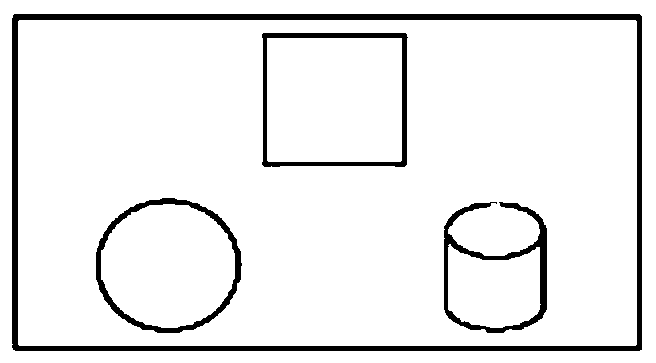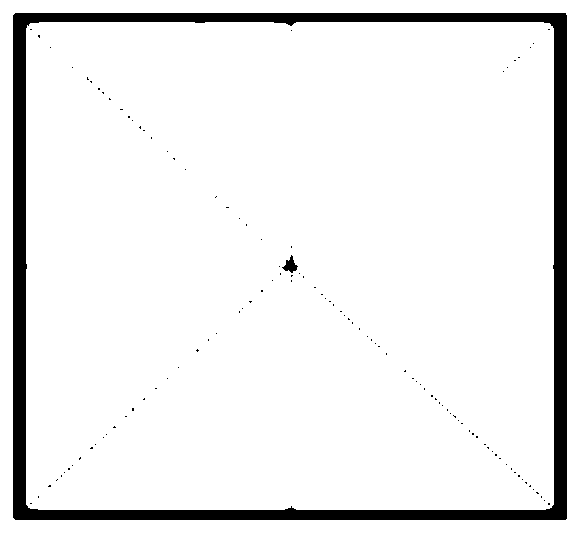A large-screen mobile phone screen unlocking method and large-screen mobile phone
A mobile phone screen and unlocking technology, which is applied to branch office equipment, electrical components, telephone communications, etc., can solve the problems of accidental unlocking and cumbersome unlocking process, and achieve the effects of preventing violent cracking, high security and reliability, and convenient operation
- Summary
- Abstract
- Description
- Claims
- Application Information
AI Technical Summary
Problems solved by technology
Method used
Image
Examples
Embodiment 1
[0045] The method for unlocking the screen of a large-screen mobile phone in this preferred embodiment includes the following steps:
[0046] S1, screen unlocking interface display: turn on the touch screen, the CPU module system randomly generates a binary feature array and assigns the binary feature array to a three-dimensional graphic, so that a random feature surface of the three-dimensional graphic is displayed on the unlocking interface of the touch screen;
[0047] S2. Unlocking: operate the touch screen, control the three-dimensional graphics to rotate horizontally and / or vertically on the unlock interface, when the three-dimensional graphics rotate to the pre-unlock feature surface, confirm the input by operating the touch screen, and compare the CPU module Whether the binary feature array of the 3D graphics pre-unlock feature surface on the current unlock interface is the same as the preset binary feature array;
[0048] If they are the same, the CPU module controls ...
Embodiment 2
[0072]The structure, principle and implementation steps of this embodiment are similar to those of Embodiment 1, the difference is that in the encryption process in this embodiment, the method of the binary feature array preset on the three-dimensional graphic feature surface includes: The three-dimensional graph performs numerical input on each scale of the X and Y axes, and uses the binary feature array (xn, yn) of the current feature surface as the preset binary feature array. The scale of the X-axis where the 3D graph is located is used for numerical input. For example, input 1 for the X-axis. After the input, you can confirm the data value of the X-axis by lightly pressing the touch screen, and then set the scale of the Y-axis where the current 3D graph is located. Numerical input, such as X-axis input 0, after the input, you can confirm the data value of the Y-axis by lightly pressing the touch screen. After both values are input, you can confirm the input result by pre...
Embodiment 3
[0074] The structure, principle and implementation steps of this embodiment are similar to those of Embodiment 1, the difference is that: when the binary feature array is preset in this embodiment, the three-dimensional graphics will rotate upward along the Y axis by lightly touching any position on the touch screen; Press any position on the touch screen, and the 3D graphics will turn right along the X axis; press any position on the touch screen again, and the system will automatically record the binary feature array of the current 3D graphic feature surface as the preset binary feature array.
[0075] When unlocking with one hand, you can lightly touch = turn up the Y axis; lightly press = turn right on the X axis; press again = confirm the input result, and press again to confirm the input, if the binary feature array of this feature surface is consistent with the preset result Same to unlock.
PUM
 Login to View More
Login to View More Abstract
Description
Claims
Application Information
 Login to View More
Login to View More - R&D
- Intellectual Property
- Life Sciences
- Materials
- Tech Scout
- Unparalleled Data Quality
- Higher Quality Content
- 60% Fewer Hallucinations
Browse by: Latest US Patents, China's latest patents, Technical Efficacy Thesaurus, Application Domain, Technology Topic, Popular Technical Reports.
© 2025 PatSnap. All rights reserved.Legal|Privacy policy|Modern Slavery Act Transparency Statement|Sitemap|About US| Contact US: help@patsnap.com



